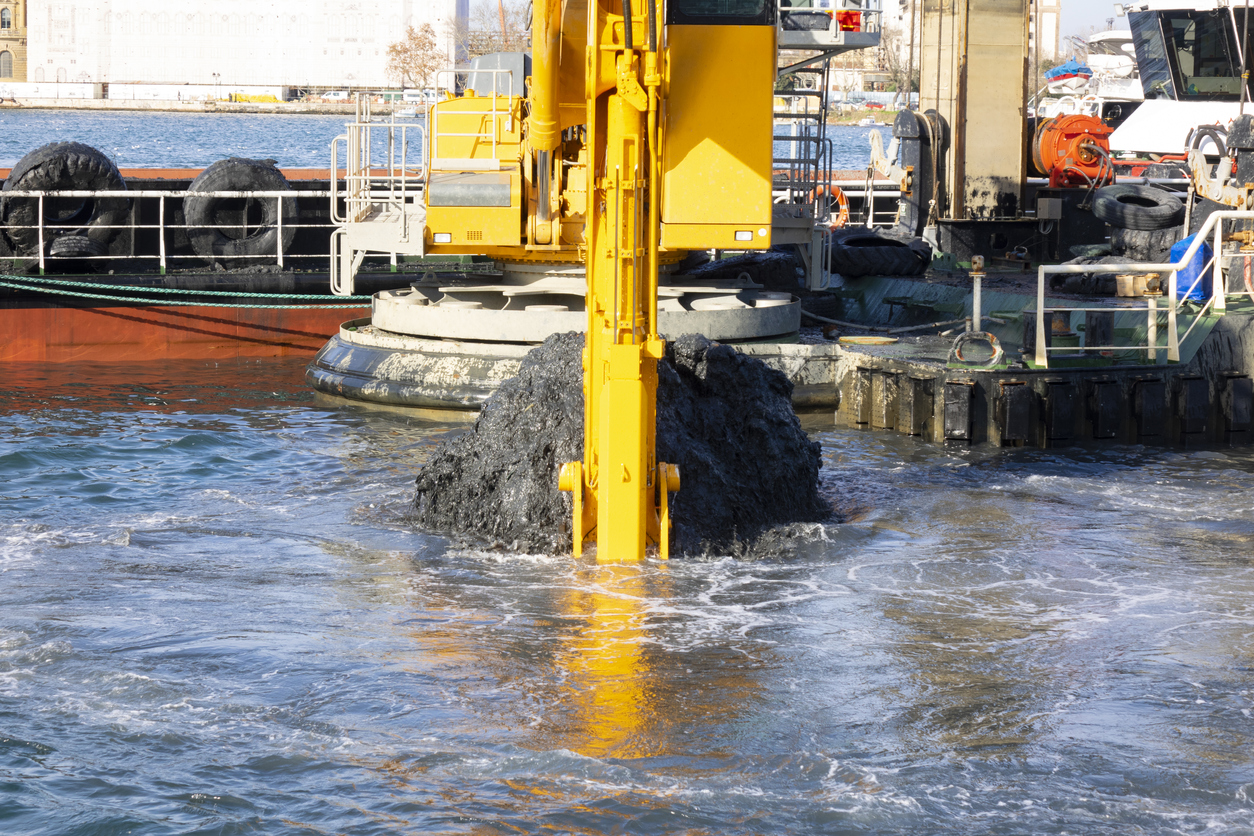
Commercial Dredging Safety Checklist
May 7, 2020
In the commercial maritime industry, dredging operations represent some of the riskiest procedures and practices for both workers and the environment. Dredging requires the use of heavy machinery, which presents significant hazards for employees. Accidents or errors during operations can release harmful sediments or pollution, often resulting in expensive insurance claims and cleanup costs.
Commercial dredging safety, then, is paramount in these operations. Dredging companies must adhere to established best practices in order to protect valuable workers and environments in areas where dredging is conducted. Here is a more detailed look at some of these best practices.
What is Commercial Dredging?
Commercial dredging is the process of excavating marine sediments for the purposes of clearing ship channels, preparing areas for construction, or building new waterways for recreational and commercial uses. Dredging may also be employed to re-nourish beaches, bringing sand from offshore locations and redepositing it onto eroded coastlines. Dredging operations use heavy machinery, often mounted to barge-like ships, to conduct the excavation.
Common Hazards in Commercial Dredging
The machinery used in commercial dredging operations takes many forms, with excavators and powerful suction equipment used to remove marine sediments, rock, and sand. As such, this machinery poses significant hazards to workers – hazards that include crushing injuries as well as slip and fall incidents. Proximity to water is another hazard; since many dredging operations are based on boats or barges, immersion and drowning injuries of workers are all too common.
Dredging can also cause environmental damage. Pipelines, such as oil and gas lines, may be found in or near many ship channels and boat basins; if those pipelines are contacted during dredging operations, they may release pollutants into surrounding waters. Stirring up marine sediments during dredging can also smother delicate marine life, resulting in severe damage to critical coastline ecosystems.
Risk Management in Commercial Dredging
The foundation of any industry’s risk management strategy is commercial liability insurance. For marine dredging operations, this insurance may include coverages for general and professional liability as well as pollution or environmental liability. Commercial dredging can be a risky endeavor, and operators must be aware of industry best practices to reduce the possibility of expensive claims, not to mention injuries and environmental damage.
The first step in any dredging project is for stakeholders to identify any pipelines or sensitive ecosystems within the work area. These features must be carefully surveyed and marked in such a way as to make them easily identifiable during dredging. Companies that manage pipelines often have monitoring centers; having telephone numbers for these centers on hand is a good practice if an incident should occur.
Notifying Pipeline and Utility Companies in the Area
Before dredging commences, notifying pipeline and utility companies via the free 811 One Call system is critical. Federal and state laws mandate notification of utility companies prior to digging, typically at least seven business days from the start of work.
Proper Incident Reporting
Anyone working on a dredging project, such as equipment operators, must be trained on the procedures for identifying pipeline leaks. They must also be given instruction on what to do if an incident, such as an oil leak or pipeline breach, should occur. Reporting incidents as soon as they happen can help to speed mitigation efforts to the affected areas, potentially minimizing the impacts pipeline leaks may cause.
Best Practices Checklist
The Council for Dredging & Marine Construction Safety (CDMCS) has published a best practices checklist for dredging operators. This handy guide should be reviewed before work commences and it is recommended that the checklist also be reviewed at shift changes and at worksite safety meetings. By adhering to industry best practices and by ensuring that commercial marine insurance policies reflect expected risk exposures, dredging companies may continue their operations that enhance and maintain navigable waterways across the United States.
About Merrimac Marine Insurance
At Merrimac Marine, we are dedicated to providing insurance for the marine industry to protect your clients’ business and assets. For more information about our products and programs, contact our specialists today at (800) 681-1998.
